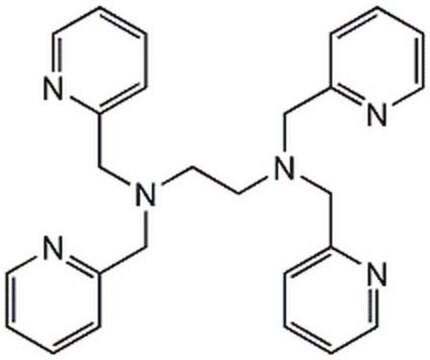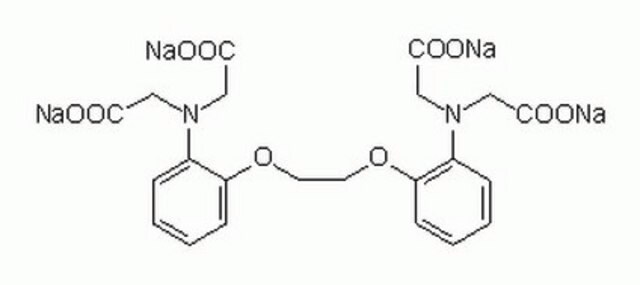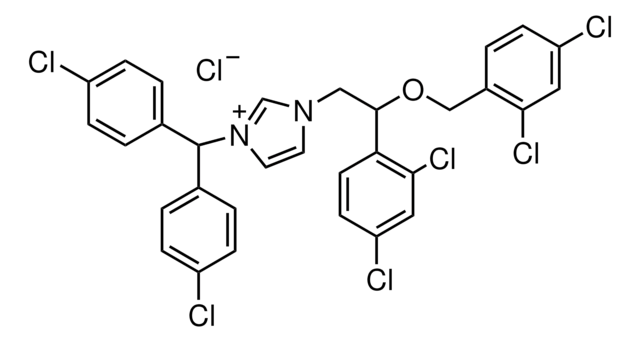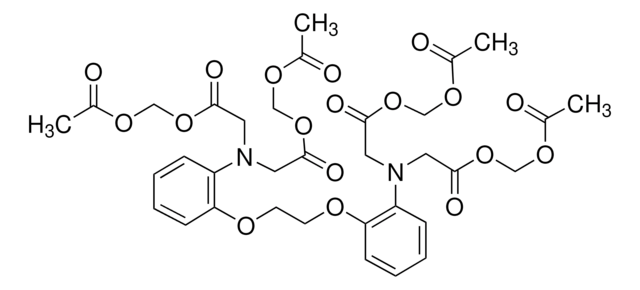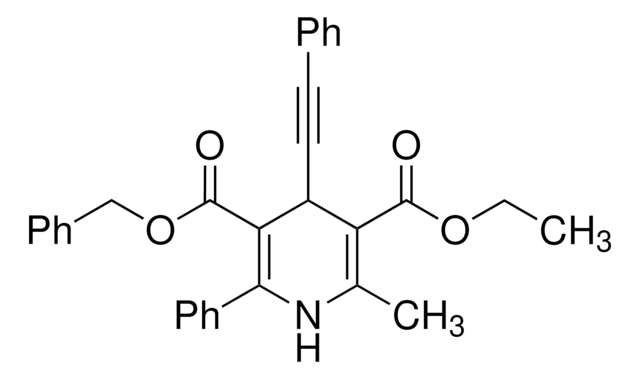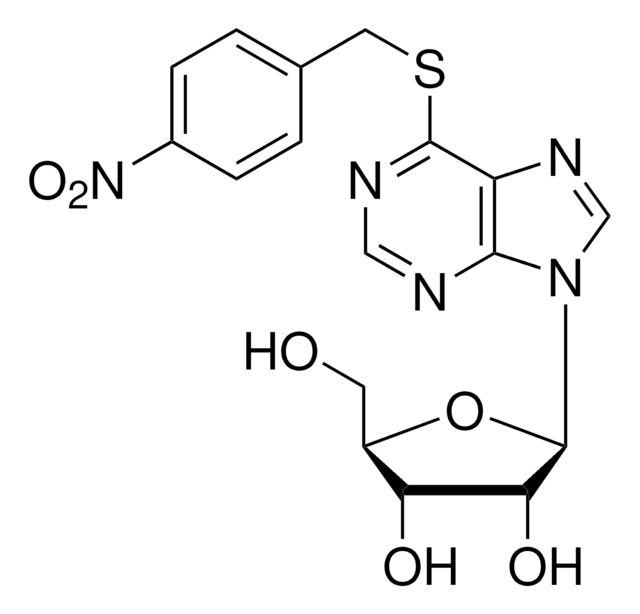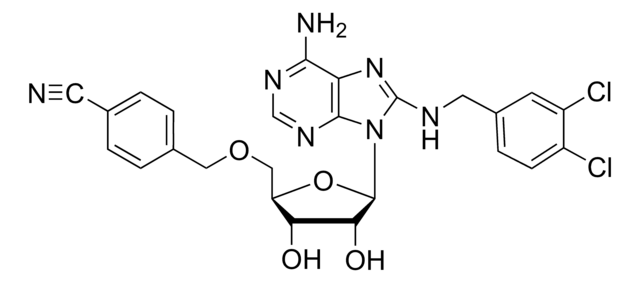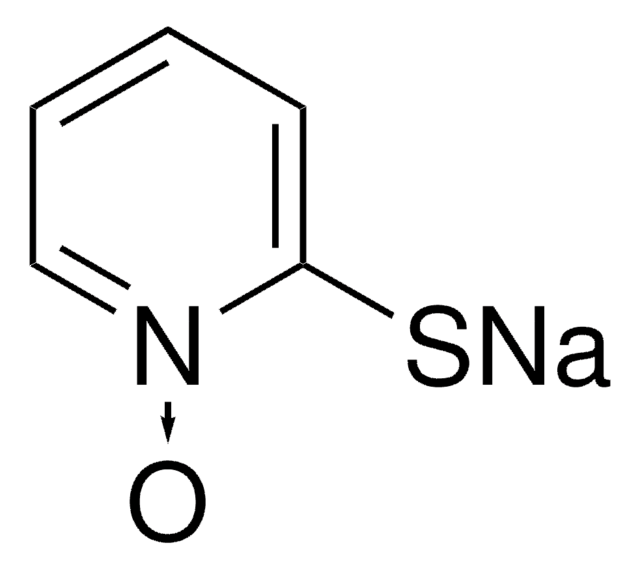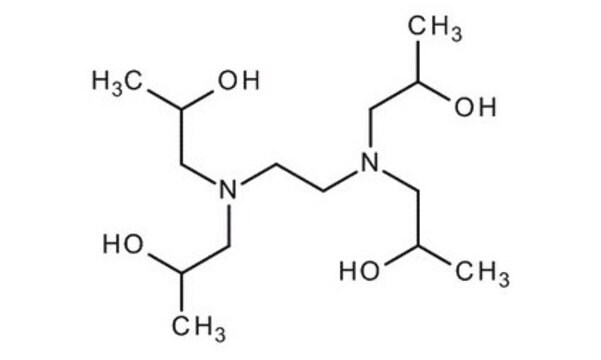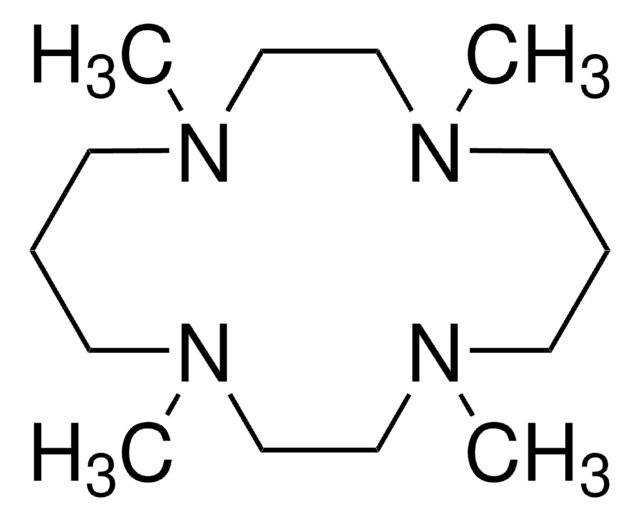P4413
N,N,N′,N′-Tetrakis(2-pyridylmethyl)ethylenediamine
≥98% (TLC), powder, membrane-permeable zinc chelator
Sinônimo(s):
TPEN
About This Item
Produtos recomendados
Nome do produto
N,N,N′,N′-Tetrakis(2-pyridylmethyl)ethylenediamine,
Formulário
powder
Nível de qualidade
cadeia de caracteres SMILES
C(CN(Cc1ccccn1)Cc2ccccn2)N(Cc3ccccn3)Cc4ccccn4
InChI
1S/C26H28N6/c1-5-13-27-23(9-1)19-31(20-24-10-2-6-14-28-24)17-18-32(21-25-11-3-7-15-29-25)22-26-12-4-8-16-30-26/h1-16H,17-22H2
chave InChI
CVRXLMUYFMERMJ-UHFFFAOYSA-N
Procurando produtos similares? Visita Guia de comparação de produtos
Aplicação
- in the treatment of human embryonic kidney (HEK293T) cells for assessing its effect on the Jembrana disease virus (JDV) viral infectivity factor (Vif) functionality
- in P19 embryonic carcinoma cells for chelation of zinc ions released during apoptosis
- to evaluate its effect on lentiviral Vpx infection on human monocytic THP-1 cells
Ações bioquímicas/fisiológicas
Características e benefícios
Código de classe de armazenamento
11 - Combustible Solids
Classe de risco de água (WGK)
WGK 3
Ponto de fulgor (°F)
Not applicable
Ponto de fulgor (°C)
Not applicable
Equipamento de proteção individual
dust mask type N95 (US), Eyeshields, Gloves
Escolha uma das versões mais recentes:
Já possui este produto?
Encontre a documentação dos produtos que você adquiriu recentemente na biblioteca de documentos.
Os clientes também visualizaram
Conteúdo relacionado
Apoptosis, or programmed cell death (PCD), is a selective process for the removal of unnecessary, infected or transformed cells in various biological systems. As it plays a role in the homeostasis of multicellular organisms, apoptosis is tightly regulated through two principal pathways by a number of regulatory and effector molecules.
Nossa equipe de cientistas tem experiência em todas as áreas de pesquisa, incluindo Life Sciences, ciência de materiais, síntese química, cromatografia, química analítica e muitas outras.
Entre em contato com a assistência técnica